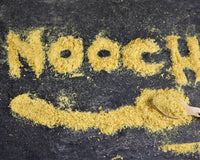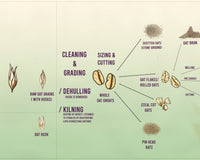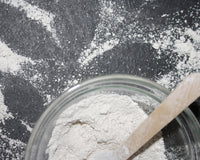What is Citric Acid
Citric Acid (CA) is a white powder typically used as an additive in foodstuffs to preserve freshness and prolong shelf life. It does so by increasing the acidity of products and killing the bacteria that cause food spoilage as the increased acidity prevents the bacteria from growing. This is also why CA is established as a powerful cleaning agent. Citric Acid is also known for its use in dietary supplements as our bodies are able to absorb minerals more efficiently if these are attached to Citric Acid.
How is Citric Acid Made?
There are two types of Citric Acid out there. The first is derived from — drum roll — citrus fruits! Things like oranges, lemons and limes. CA can also be found (albeit in smaller quantities) in tomatoes and berries. Citric Acid is a compound found naturally in citrus fruits. However, extracting Citric Acid from citrus fruits is very costly. The demand for CA is greater than the available supply of citrus fruits.
The second type of Citric Acid is one that is procured from microbial fermentation, aka fungus. The fungus in question is a type of Aspergillus, very common fungi commonly used in the pharmaceutical industry. Aspergillus is fed with sugar which it metabolises into a liquid solution. In time Aspergillus spores germinate and cover the liquid creating a mat of mould. Some days later, the Citric Acid starts being produced.
Sugars used for the creation of Citric Acid can be derived from wheat, cane sugar, or corn. Citric Acid is often derived from corn in the US since it is a very cheap, heavily subsidised crop. In South America, however, cane sugar is preferred due to the lower price of sugar. While in Europe, wheat sweeteners are typically used. Citric Acid can be obtained as an anhydrous (meaning water-free) form or as a monohydrate. The anhydrous form of Citric Acid crystallises from hot water, while the monohydrate forms when Citric Acid is crystallised from cold water.
What is Citric Acid Used For?
Due to its acidic, sour-tasting nature, CA is predominantly used as a flavouring and preserving agent. This is especially prominent in the production of soft drinks and candies. It's also used to stabilise or preserve medicines and as a disinfectant against viruses and bacteria.
However, CA may also be used in the home as a cleaning agent as well as a food preservative. Citric Acid high acidity levels help kill off bacteria, mould, and mildew, making it a great disinfector/ general cleaner. It is also incredibly effective at ridding bathrooms of soap scum, hard water stains, limescale and rust. Our excellent Citric Acid and Bicarb paste recipe will blitz any and all stains from shower screens to tubs, tiles even toilet bowls! All the bathroom nasties will disappear without a trace.
In the kitchen, Citric Acid is popularly used to preserve certain foods. For instance, if you’re having a large party of people coming over and you don’t want your big bowl of guacamole to brown while people get around to eating it, sprinkle a bit of CA and boom! Your guac won't brown. The same is true for apple slices, still want them to look crisp and fresh for a packed lunch or a serving platter? Sprinkle some Citric Acid over the top, and you’ll have that perfect slice look for longer. Citric Acid is also another way to add some sour power into your recipes without the need for any more liquid to be added.
Citric acid is a naturally occurring acid. Manufacturers use a synthetic form of citric acid, called MCA, in many commercial products. Manufacturers also use this versatile acid in food preservation. Although it is regarded as generally safe to use, people with sensitive skin or allergies may wish to avoid citric acid or use it in small quantities.






